
Bucaramanga Travel Guide + Map
TL;DR
Bucaramanga might not be on every traveller’s radar, but our guide shows you exactly why it’s worth a stop – from stunning views to great food.
We’ll be honest – Bucaramanga wasn’t really on our radar at first. We were simply looking for a good place to break up a long bus ride between the Caribbean coast and Colombia’s major cities like Bogota and Medellín. But Bucaramanga turned out to be more than just a pit stop – it surprised us with unexpectedly cool things to do.
From riding a cable car to a giant mountaintop Jesus to hunting down the best tamales in the country (spoiler: they really are that good) to stunning colonial towns and vibrant city parks – we ended up having a great time.
In this guide, we’re sharing everything we learned firsthand: how to get here, where to stay, what to do, and all the little tips that we wish we’d known before arriving. If you're on the fence about whether Bucaramanga is worth visiting, read on – we think you might be pleasantly surprised too.
Bucaramanga Colombia Travel Guide
Bucaramanga Map
Is Bucaramanga Worth Visiting?
Bucaramanga is conveniently located between the Caribbean coast of Colombia and Bogota or Medellin. In our opinion, this is the perfect place to stop for a day and break up the long bus journey.
How to Get to Bucaramanga
As we mentioned, the location of Bucaramanga is super convenient. There are direct buses to the most important destinations in Colombia. You can check the details (and book tickets) on Busbud but here are some examples:
- Cartagena to Bucaramanga, 13.5 hours
- Santa Marta to Bucaramanga, 9 hours
- Riohacha to Bucaramanga, 12.5 hours
- Medellin to Bucaramanga, 7 hours
- Bogota to Bucaramanga, 9.5 hours
- San Gil to Bucaramanga, 2.5 hours
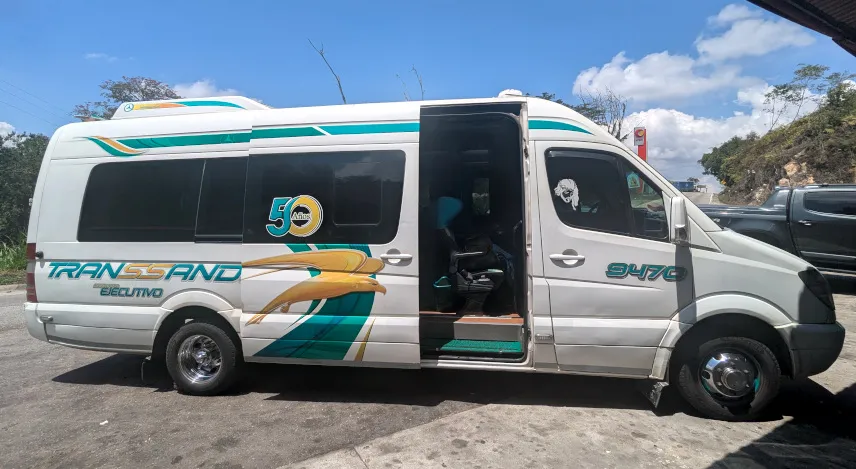
How to Get Around Bucaramanga
Except for Cabecera, Bucaramanga did not feel very walkable. There are local buses but to be honest, we only used Uber – and we normally try to avoid Uber and taxis for cost reasons. In Bucaramanga, it was very affordable and convenient.
Where We Stayed in Bucaramanga
Locals recommended we stay in the Cabecera because it’s supposedly the nicest and safest area in town.
They specifically recommended Zamia Hostel. The location is nice and it is a great place to meet other travellers in Bucaramanga. It is right next to Bajo Sombra Coffee Shop which is a nice place for breakfast and coworking as well as close to many other restaurants.
There’s a rooftop and a kitchen – some big supermarkets are nearby.
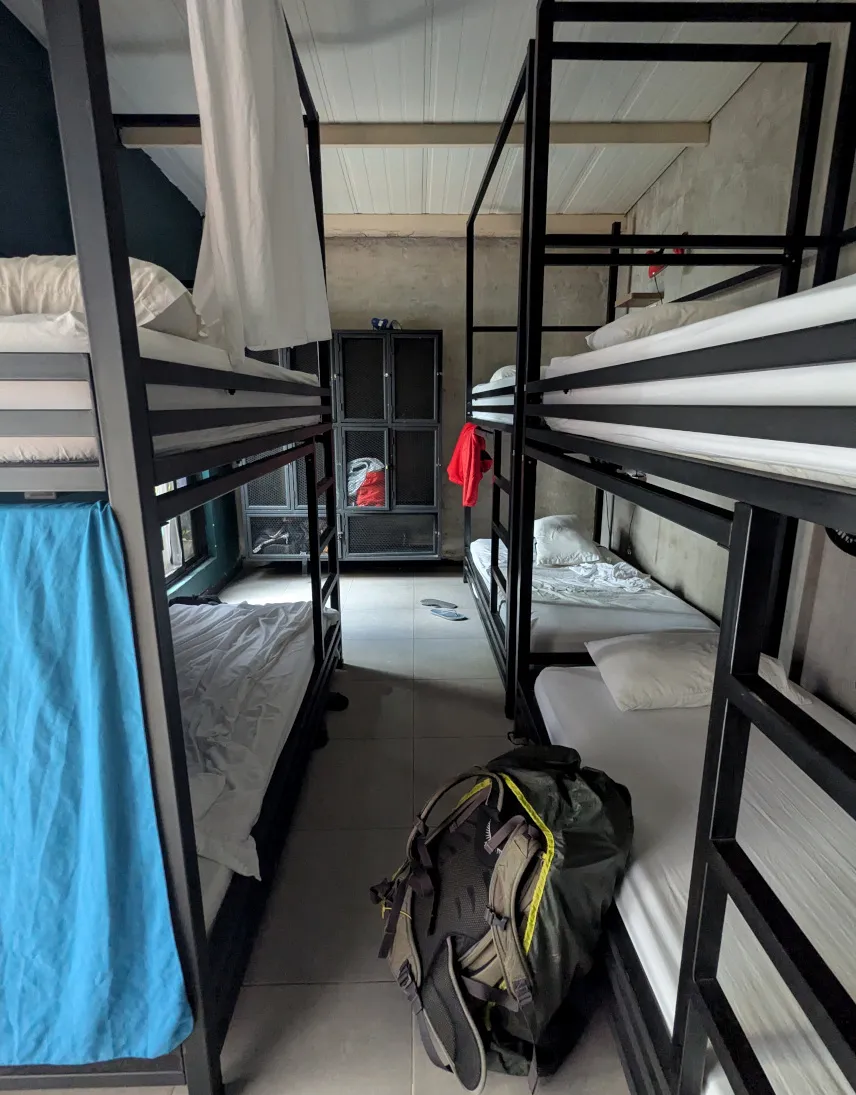
11 Amazing Things to Do in Bucaramanga
1. Taking the Cable Car to Parque Cerro del Santísimo
The giant Jesus statue at Parque Cerro del Santísimo is Bucaramanga’s answer to Rio de Janeiro. It is 35 m high and is reached by a 1380 m cable car system. The cable car is open every day from 3 pm and we enjoyed the ride very much. At the top, you can buy food and drinks.
We took an Uber there so here’s our word of warning:
The viewpoint is supposed to be a great sunset spot. There’s even a fountain show when it’s dark. Fortunately for us, it started raining and we left early. Ubers don’t pick you up at the entrance. You have to walk for a couple of minutes through a bamboo grove to get to the main road where Ubers will come. We’re not sure if we would be comfortable doing this after dark.
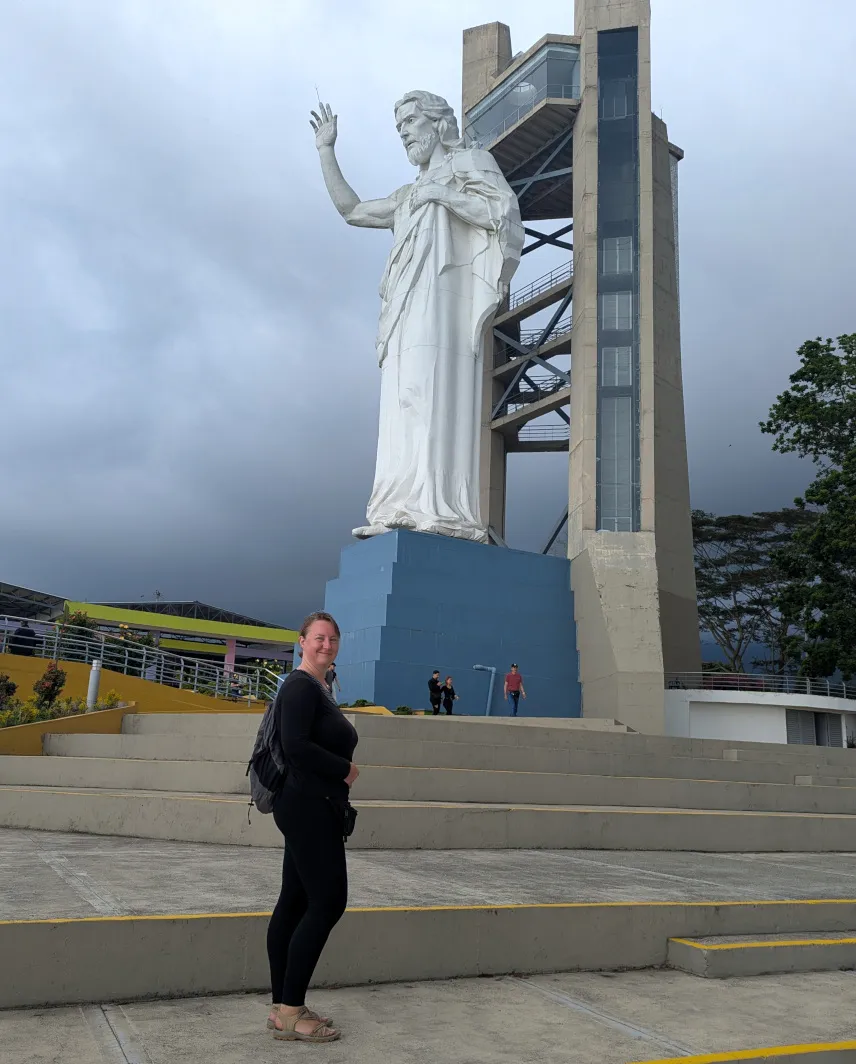
2. Watch the Sunset from the Holiday Inn Bucaramanga Cacique
A great spot to watch the sunset is the rooftop terrace of the Holiday Inn Bucaramanga Cacique. The drinks weren’t too expensive, we weren't checked for a dress code, and the views speak for themselves.
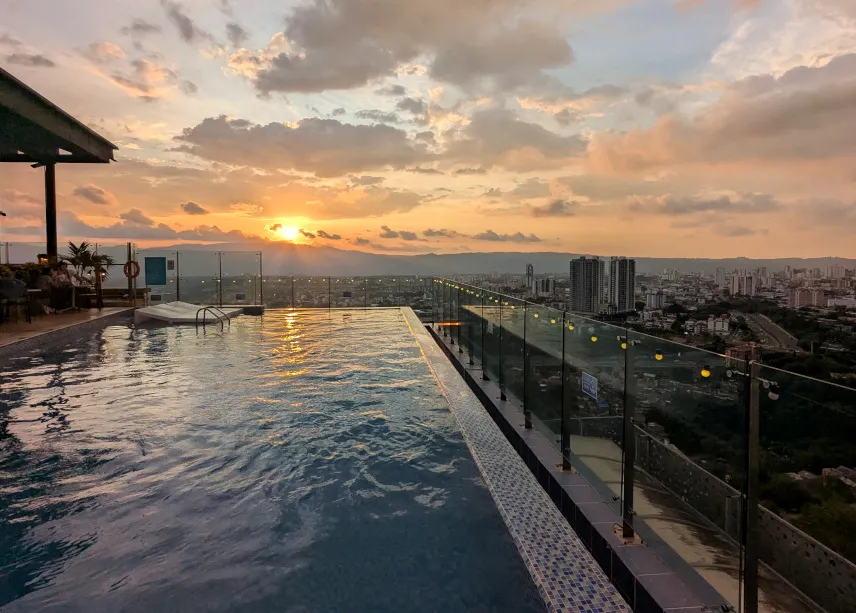
3. Visit Giron
Giron is a 2000000 inhabitant city roughly a 15-minute drive from Bucaramanga. It is known as the white city and known for its colonial architecture.
Don’t miss the Parque Principal with the Minor Basilica of Saint John the Baptist, the Capilla Nuestra Señora de las Nieves, and the many bridges.
You can easily reach Giron from Bucaramanga by Uber and it makes for a great half-day trip.
We have written a complete Giron travel guide:
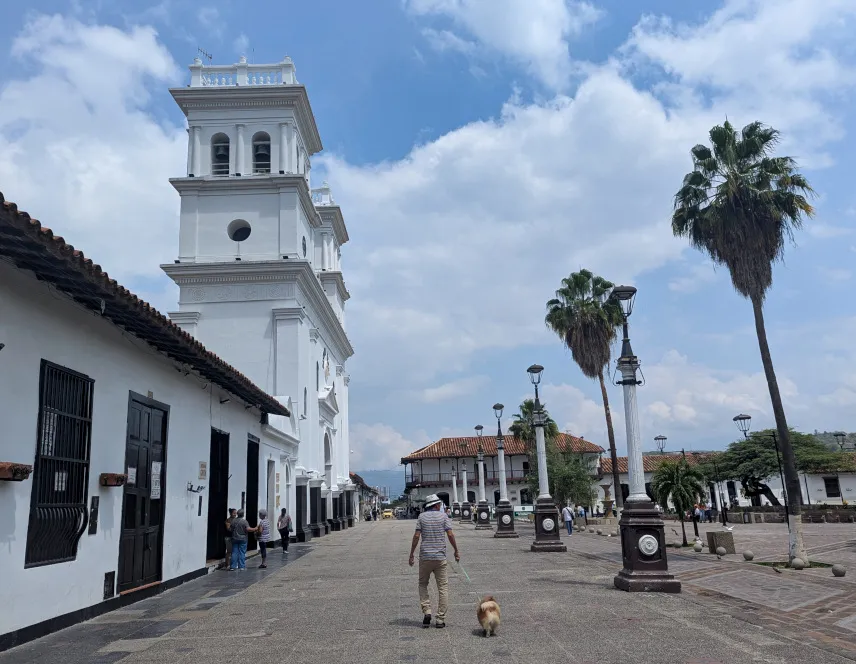
4. The City of Parks
Bucaramanga is also called the City of Parks. It has over 160 parks scattered throughout the city. We liked to just grab a snack and people-watch.
Our favourite park is Saint Pío Park in Carbecera with its Botero statue.
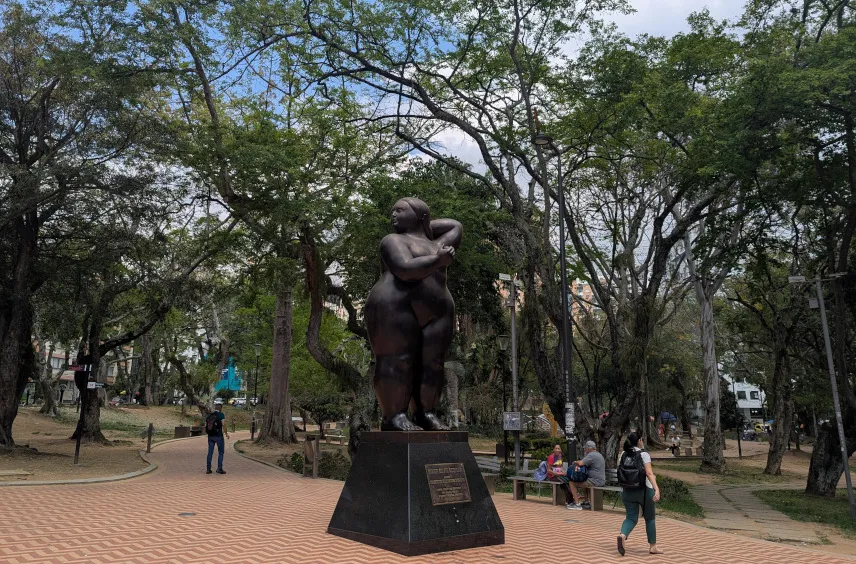
5. Check out Parque Garcia Rovira
You can find many cool sights like San Laureano Church, the Palace of Justice with the super cool Plazoleta Cívica Luis Carlos Galan in front of it, the city hall, Casa Luis Perú de la Croix, and the Capilla de los Dolores around this square.
You can also eat some amazing tamales here.

6. Casa del Libro Total
The Casa del Libro Total or House of the Total Book is a unique cultural space which offers a digitised collection of books, music, and art. It’s free to visit for everybody!
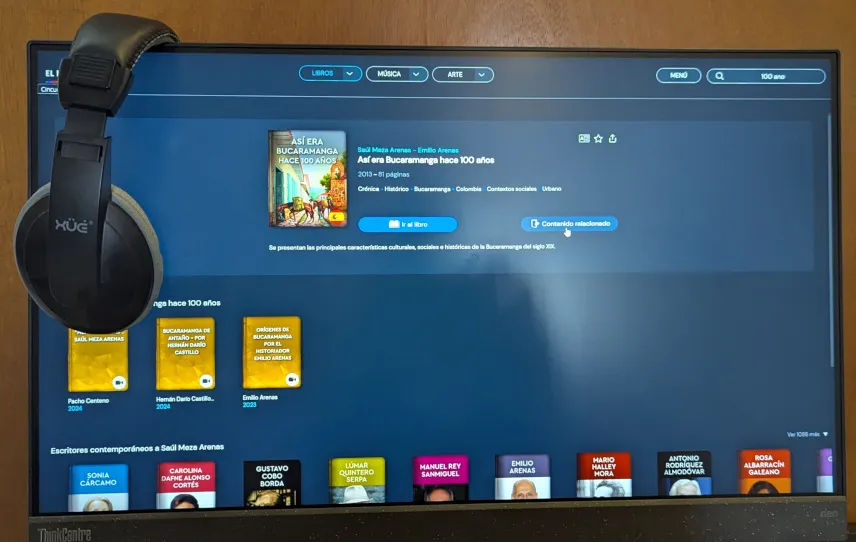
7. Casa de Bolívar
The Casa de Bolívar, also known as the Santander Historical Museum, houses nearly 4000 artefacts that highlight the archaeological and artistic richness of this northeastern region of Colombia.
It’s a must-visit when you’re in the city centre.
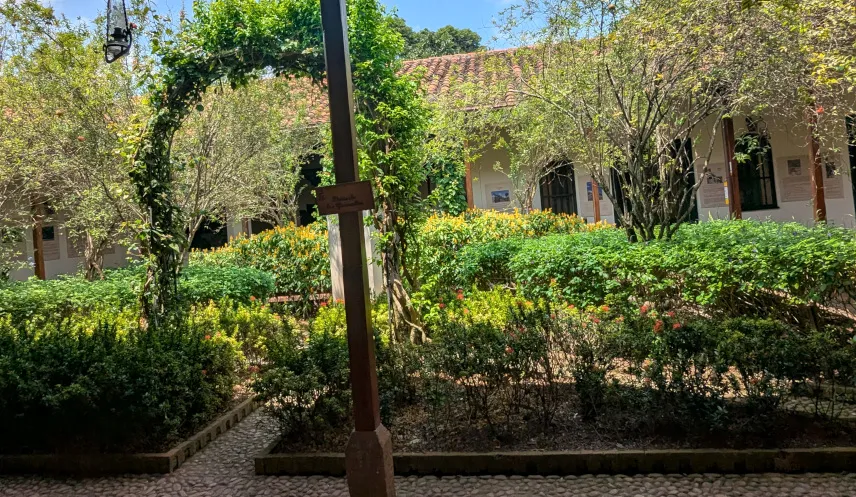
8. Stroll through the City Centre
A word of advice in the beginning: We did this walk but the area seemed a bit bit dodgy so always be aware of your surroundings and don’t do this walk blindly. From the Parque Garcia Rovira, you can head to the Bucaramanga market and Plaza de Mercado Central. From here it’s a short walk to Parque Centenario and the stunning Teatro Santander. We ended our walk at Parque Santander and the Catedral Metropolitana de la Sagrada Familia.
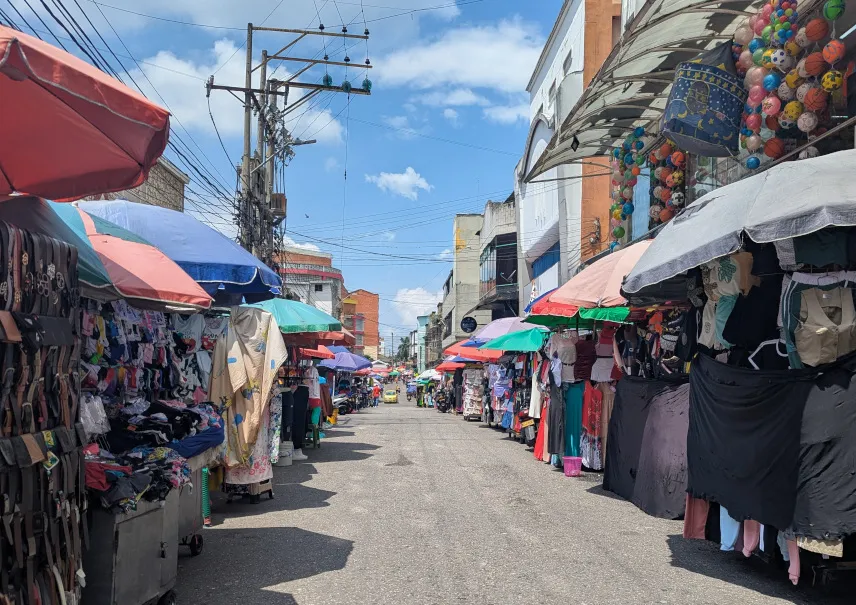
9. Bucara Voluntours
Zamia Hostel collaborates with an organisation called Bucara Voluntours which offers some really cool tours around Bucaramanga including some off-the-beaten-path areas.
Their tours don’t run every day so you need some advance planning to participate.
10. Viaducto de la Novena Lights
The Viaducto de la Novena, also known as the Viaducto Provincial, is a cable-stayed bridge in Bucaramanga, Colombia. Spanning 550 meters (1,804 feet) in length and rising 130 meters (427 feet) high, it is the longest urban bridge in South America and the tallest in Colombia. Every night, the bridge is brilliantly illuminated by more than 7800 LED lights, transforming it into a vibrant city landmark.
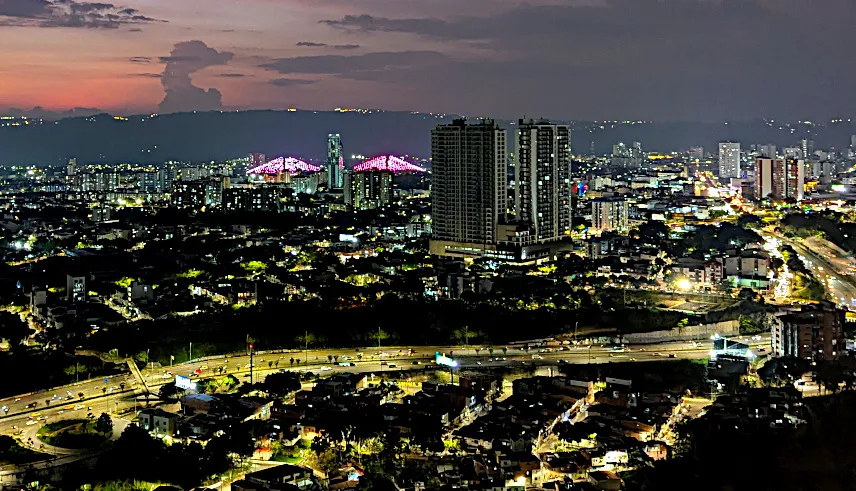
11. Shopping Malls
Bucaramanga is not only the city of parks but also of shopping malls. Some of the best are the Cacique Shopping Centre (where the Holiday Inn Bucaramanga Cacique is located), Megamall, and Centro Comercial Cabecera.
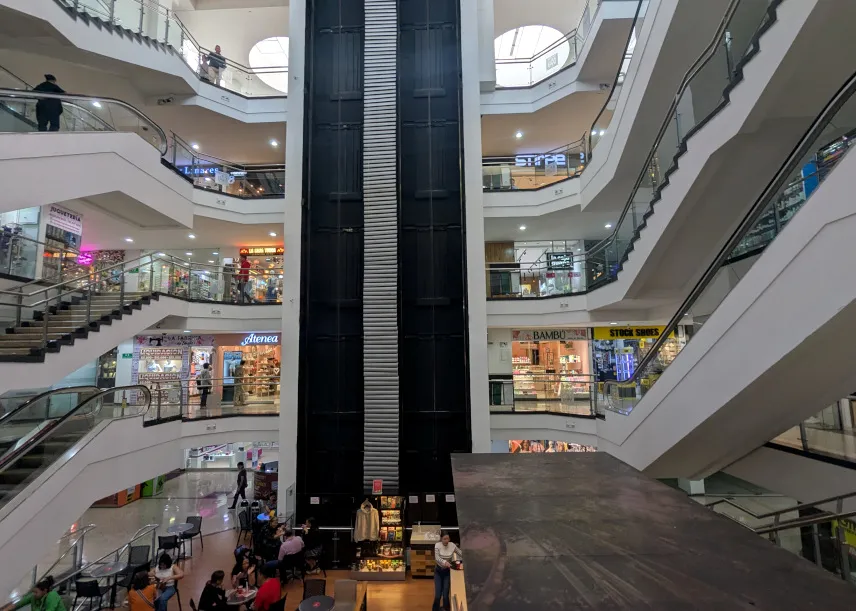
How Many Days Do You Need in Bucaramanga
We think one day in Bucaramanga is enough.
Where to Eat in Bucaramanga
When we mentioned that we will go to Bucaramanga, locals frequently recommended doing two things: eating the best tamales in Colombia and eating hormigas culonas (big ass ants).
Food around Cabecera is very international but we found some great tamales in the centre at The Pig next to Parque Garcia Rovira (we have marked to spot on our map).
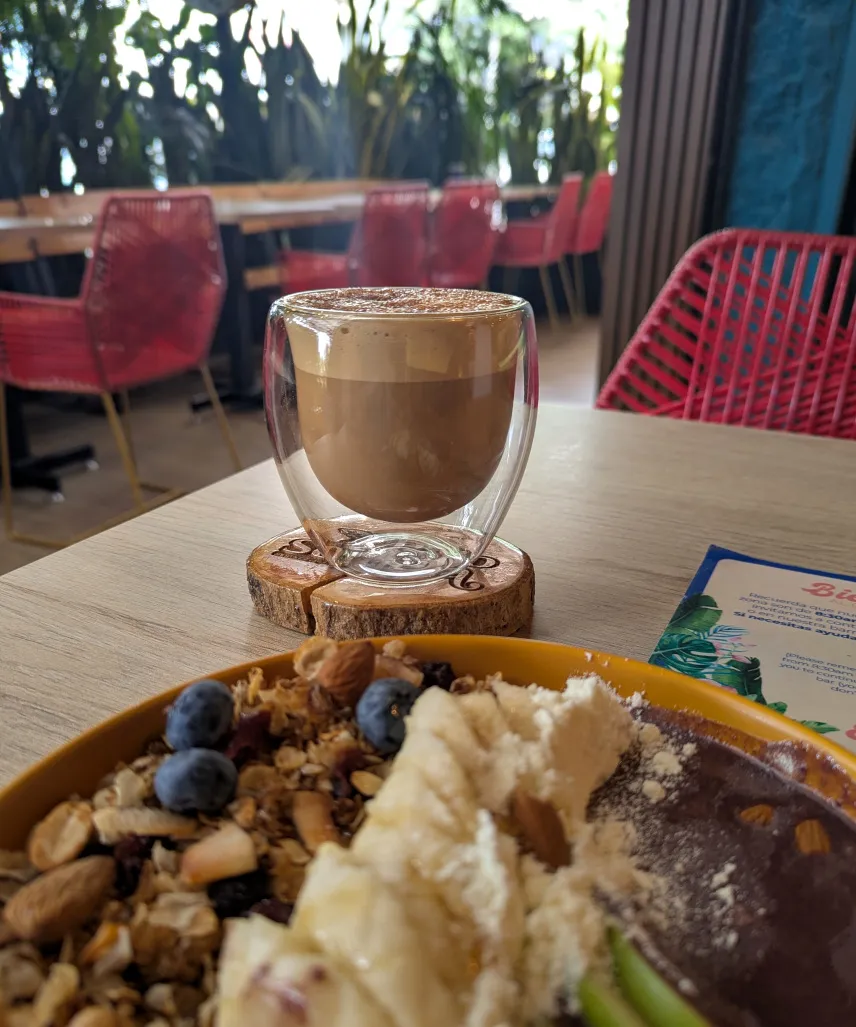
Infrastructure in Bucaramanga
Bucaramanga is a huge city. When you stay in Cabecera, you will have no problem finding ATMs, supermarkets, and restaurants as well as cafes with good WiFi.
Is Bucaramanga Safe
The short answer is not really. We stayed in the Cabecera area which felt safe enough to walk (also after dark) but we heard many stories about people getting robbed or pickpocketed.
Always be aware of your surroundings and don’t flash your valuables.
This post contains affiliate links. If you use these links to buy something we may earn a commission. You would help us a lot if you do so. Thanks.



